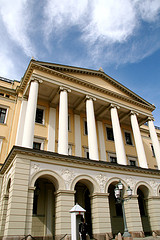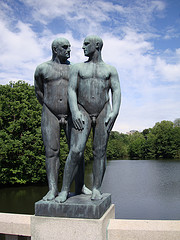Dealing with loss overseas
If you are currently abroad, or planning on moving abroad soon, what would you do if a family member passed away while you’re living outside of the country? Do you have plans, and a contingency fund with enough money to fly home at short notice if necessary?
I ask this because my Grandmother passed away on Sunday morning. Luckily, I saw her a week before at my brother’s wedding, and she was doing fine then, except for a fall she had recently. Nobody expected this. –After a mild heart attack on Saturday, she was stable and they were planning on using a catheter to try and clear any blocks on Sunday morning. Unfortunately, during the night, she took a turn for the worse, and they weren’t able to keep her alive long enough for us to make the 2 1/2 hour trip to the hospital.
I’m not sure just how much you can plan for something like this, to be honest. But such an event is one that you have to consider, especially if you have aging relatives. I can’t tell you how to deal with loss, but I can make some suggestions on how you can be ready to deal with something like this:
- Keep in touch with family regularly. No, you don’t necessarily have to call everyone once a week. But once a month would probably be a good idea.
- Have a contingency fund ready with enough money for a roundtrip ticket purchased at the last minute. I realize this can be hard to calculate, but you can expect to need at least $2000, and realistically, $4000 would be a better number to have in your savings account.
- Try not to dwell on this possibility. Remember, this isn’t something that you expect to happen, and you don’t need to worry yourself sick over this, but rather acknowledge as a possibility.
Maybe this is a useful post for people, and maybe it isn’t. I don’t want to make people think they shouldn’t live abroad because of this risk. I just don’t want you to forget that it’s something you may have to deal with.


